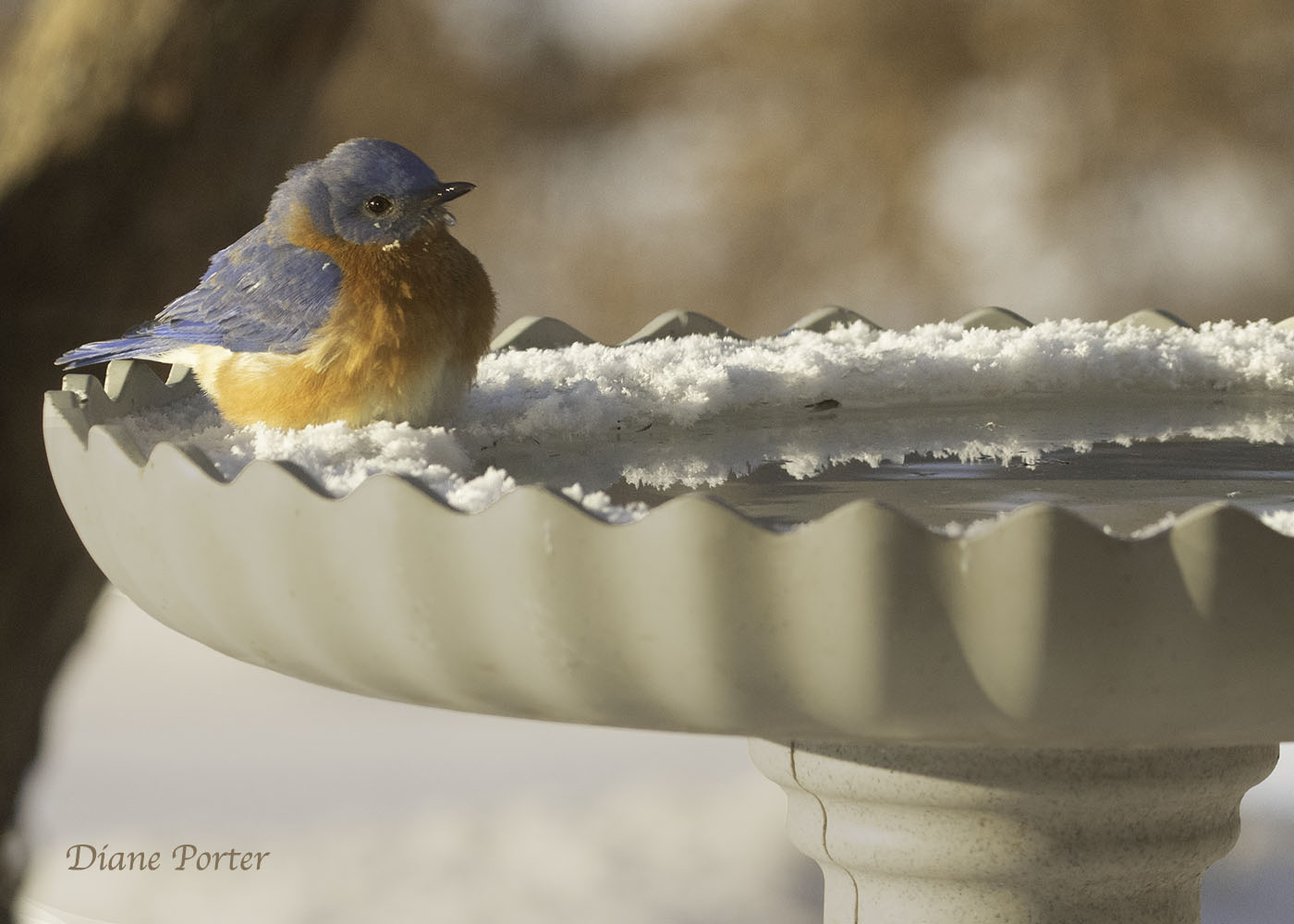Winter Water for Birds
How do birds get water when it's freezing outside? My birdbath is a miniature ice skating rink. I just don't see how the birds survive. — Minnie P., Minox ND

The magic of water
In deep snow and sub zero temperatures, there’s no such thing as liquid water. Birds have to fulfill their water requirement from food such as wild fruits or the bodies of insects. Or else from eating ice and snow. Unless they find a heated birdbath.
Maintaining open water is an opportunity for bird lovers. The purpose is not keep the water warm but simply to keep it liquid. In extremely cold weather, the edges of the water may freeze, but as long as some of the surface is liquid, it will attract birds like mad.
Here’s why liquid water is so important to birds.
The special cost of eating snow
It takes energy to melt ice — to do a phase change from solid form to liquid. Merely melting ice actually does not make it warmer. It starts getting warmer only after it finishes melting.
The surprising part is that it takes twice as much heat energy to change a bit of snow into water as it does to warm the resulting water to the temperature of a bird’s body, which is about 104° Fahrenheit.
Where does a bird’s energy come from?
From food. If the birds can save themselves the “expense” of eating snow, they get to spend their calories instead on flying and on making it through a frigid night.
Your little circle of liquid water in winter can help birds survive the worst night in the year. And it powerfully motivates birds to visit your backyard.
Here are a few things to keep in mind when you add a birdbath to your backyard
Winter birdbath tips
Power to the birdbath ~ You want to offer liquid water, not an ice skating rink, so put the birdbath where you can run an outdoor-rated electric cord to it. In extremely cold weather, some ice may form around the edges, but there is almost always open water at least in the middle
If you have a birdbath you like, but it doesn’t have a built-in heater, you can a de-icer, which is a heating element that sits down in the basin. It’s not quite so convenient, but it’s an economical way to make your birdbath usable in winter.
Put it high ~ An elevated bath is safer than a bath on the ground, because of predators such as cats. Think pedestal or a deck railing. Nearby trees or overhanging can help a wet bird flutter up into safety if danger threatens.
Such a bath is easy to see from the house, easy to clean without bending over much, and safer from predators.
If there is not much danger from cats, you can use a ground level birdbath.
Retrofit ~ If you already have a birdbath that you like, but it doesn't keep the water from freezing in winter, you can add a de-icer, a heating element that sits down in the basin. It's not quite as convenient as a bath with a built-in heater, but it is an economical way to tranform your present bath into something that will function in winter.
Reward
Nothing warms my heart like looking out on the frost-rimmed birdbath, with a little steam rising, and a bunch of birds enjoying a drink.

